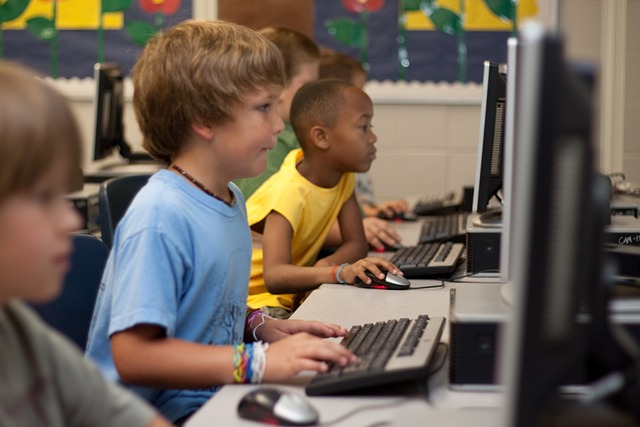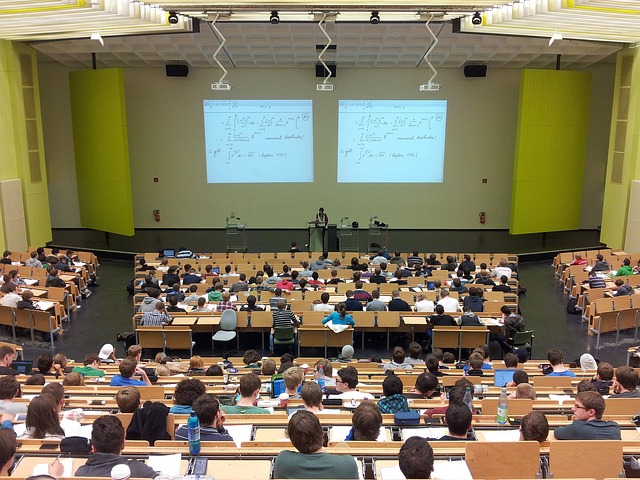
The Best 16 Incisive And Interesting Facts About Education
Interesting Facts About Education
Education has always been a cornerstone of societal growth and personal development. However, there’s more to it than just textbooks and classrooms. Delve into these interesting facts about education to uncover surprising insights and lesser-known tidbits that will both enlighten and fascinate you. Whether you’re an educator, student, or simply a curious mind, these revelations are sure to pique your interest.
Here’s A Table of Content For Quick Navigation
- Europe and Asia
- The term "private school"
- The Historical Underpinnings of Education
- Surprising Tidbits about Modern Education
- Global Education Anomalies
- Challenges and Triumphs in Modern Day Education
- Striking Statistics from Different Corners of the Globe
- Innovations in the Landscape of Learning
- The Education-Wealth Paradigm
- The Diversity and Richness of Educational Systems
- The Global Push for Quality Education
- The Intricacies of Secondary and Higher Education
- A Dive into Fun and Astonishing Educational Facts
- The Varied Length of Educational Journeys
- World Records and Noteworthy Educational Facts
- The Digital Revolution in Education
- Challenges and Hopes for the Future
- Cultural Differences in Learning Approaches
- Interesting Facts About Education Conclusion (Continued):
The Historical Underpinnings of Education
The First Schools:
Did you know that formal education traces its roots back to the Middle Ages? While the concept of teaching and learning is ancient, the first schools as we know them originated in this era.
World’s Oldest Institutions:
The world’s oldest school is believed to be the King’s School in Canterbury, England. Founded in 597 AD, it predates the establishment of many modern educational systems.
The Rise of Universities:
The oldest university in existence is the University of Al-Qarawiyyin in Fez, Morocco, founded in 859 AD. This institution paved the way for higher education as we know it today.
Surprising Tidbits about Modern Education
Record Breakers:
The world’s largest school in terms of the number of students is the City Montessori School in Lucknow, India, boasting over 55,000 students.
The Short and the Long of It:
Finnish students enjoy the shortest school year, yet consistently rank high in global education statistics. On the flip side, students in Japan experience some of the longest school days worldwide.
From Boat to Bottle:
In Bangladesh, floating boat schools are a creative response to monsoon season. In parts of Central America, bottle schools constructed from plastic pop bottles and other recyclables serve as vital educational hubs.
Global Education Anomalies

Geographic Disparities:
In sub-Saharan Africa, more than 50% of students do not complete primary school. In contrast, South Korea is a behemoth in the realm of education, with a literacy rate nearing 98%.
Summer Vacations and Their Origins:
Ever wondered why we have summer vacation? This tradition started because American schools in the 1800s wanted to keep kids out of school during the hottest months.
The Role of Play:
Finnish students, despite their shorter academic year, are given 15 minutes of free play for every 45 minutes of instruction, emphasizing the importance of balance in the learning process.
Challenges and Triumphs in Modern Day Education
The Digital Divide:
The advent of the internet brought about vast changes. However, many students, especially in low-income countries, still lack internet access, creating barriers to quality education.
Diversity in Education:
Statistics from the Census Bureau reveal disparities in academic performance between white students and black students in the United States of America. Addressing this requires a comprehensive understanding of diverse learning needs.
Gender and Education:
Despite challenges in certain regions, more young women are gaining access to education, reshaping societal norms and creating brighter futures.
4 FAQs About Interesting Facts About Education
Which country boasts the highest number of international students?
The United States of America has historically been the country that attracts the highest number of international students. As of my last update in 2021, the USA was home to a significant portion of the global international student population. Institutions such as Harvard, MIT, and Stanford, among others, draw students from all around the world. However, countries like Australia, the UK, and Canada are also major destinations for international students, and the rankings can change based on various factors, including immigration policies, tuition costs, and global events.
How does the educational attainment of European countries compare to Asian nations?
The educational attainment of European countries and Asian nations can vary significantly based on the criteria of measurement. However, in broad strokes:
European Countries: Many European countries, especially those in Western and Northern Europe, have a high rate of secondary school graduation and a significant proportion of the population with tertiary or higher education degrees. Countries like Finland, Norway, and Germany have robust educational systems that are often highlighted in global rankings.
Asian Nations: Asian countries, especially East Asian nations like South Korea, Japan, and Singapore, have demonstrated high levels of educational attainment. South Korea, for instance, has one of the highest rates of tertiary educational attainment in the world. However, Asia is diverse, and while countries like Singapore and Japan might have high educational standards and achievements, other nations might still be working on improving basic literacy rates.
Europe and Asia
It’s essential to recognize that both Europe and Asia have countries with strong educational achievements. Yet, the methodologies, cultural attitudes towards education, and emphasis on particular subjects can differ.
Interesting Facts About Education

Why is the primary level of education critical for young people’s future success?
The primary level of education lays the foundational skills and knowledge for young people. It is crucial for several reasons:
Basic Literacy and Numeracy: Primary education ensures that children acquire essential skills like reading, writing, and arithmetic, which are fundamental for further learning and daily life.
Cognitive Development: At this stage, children develop critical thinking, problem-solving, and decision-making skills.
Social Skills: Primary school is often where children learn to interact with peers, understand societal norms, and build relationships outside of their family.
Establishing a Love for Learning: Positive experiences in primary education can instill a lifelong love for learning and curiosity in children.
What’s the significance of the special cone given to German students on their first day of primary school?
The special cone, known as a “Schultüte” in German, is a traditional gift given to children in Germany on their first day of primary school. It is a large, brightly decorated cone filled with toys, candy, school supplies, and other treats. The Schultüte serves several purposes:
Celebration: It marks the significant milestone of starting school, turning the occasion into a memorable and festive event.
Easing the Transition: The excitement of receiving and opening the Schultüte can help alleviate some of the anxieties or nerves children might have about starting school.
Tradition: The practice dates back to the early 19th century in Germany and remains a cherished custom, symbolizing the sweetness and rewards of learning.
Conclusion:
The realm of education is vast, intricate, and riddled with both challenges and triumphs. These interesting facts about education serve as a testament to humanity’s resilience, creativity, and unyielding pursuit of knowledge.
Fact Source: City Montessori School in Lucknow, recognized by the Guinness Book of World Records as the world’s largest school by students.
Striking Statistics from Different Corners of the Globe

Compulsory Education:
Compulsory education varies across countries. In some parts of South Asia, children are mandated to attend school until they’re 14. Meanwhile, in many European countries, compulsory education extends until the age of 16 or even 18.
The Rise of the East:
Chinese students often outperform their global peers, particularly in subjects like mathematics and science. This stellar academic performance is attributed to rigorous educational systems and cultural emphasis on education.
Higher Education Trends:
Interestingly, while a college degree is seen as the ticket to a good job in many western countries, countries in Sub-Saharan Africa and parts of Latin America still grapple with basic primary and secondary education infrastructure.
Innovations in the Landscape of Learning
The Bottle School Phenomenon:
In regions where resources are scarce, locals have innovated by building schools using pop bottles filled with sand, known as bottle schools. These eco-friendly structures are not only sustainable but also cost-effective.
Gaming as Learning:
Modern education is also integrating video games into the learning process. Research indicates that well-designed educational games can foster learning while keeping students engaged.
From Blackboards to Digital Boards:
The role of technology in the classroom has expanded exponentially. From having mere projectors to fully interactive smart boards, the modern school has embraced technology for a more engaging and efficient learning environment.
The Education-Wealth Paradigm
Global Poverty and Education:
One cannot discuss education without addressing the overarching issue of global poverty. In many low-income countries, children must work to support their families, making school a secondary priority.
College Degrees and Income:
In developed nations, there’s a strong correlation between having a bachelor’s degree or higher and earning a higher income. This ties back to the societal emphasis on higher education as the key to socioeconomic mobility.
Education and Employment:
Statistics indicate that those with at least a high school diploma are more likely to secure employment compared to those without. This disparity grows even wider when comparing those with doctoral degrees, such as Veterinarians to those without formal education.
The Diversity and Richness of Educational Systems

South American Schools:
In some South American nations like Chile, the academic year starts in early March and ends in December, aligning with the southern hemisphere’s seasons.
Unconventional School Days:
In some parts of the world, students attend school in shifts. This approach ensures maximum utilization of school resources, especially in densely populated areas.
The American vs. European Approach:
While American schools often emphasize breadth over depth (students study a broad range of subjects), many European systems focus on depth, allowing students to specialize earlier in their educational journey.
Interesting Facts About Education FAQs (Continued):
How does the length of summer breaks vary across different countries?
The length of summer breaks varies significantly across countries, influenced by cultural, historical, and even climatic factors:
United States: Typically, summer vacation lasts about 10-12 weeks, starting from late May or early June to late August or early September.
United Kingdom: The summer holiday in the UK is shorter, usually lasting 6 weeks from mid-July to early September.
Japan: Summer vacation is relatively short, lasting around 5 weeks from late July to the end of August. However, Japanese students also attend school for club activities during these breaks.
Australia: It’s important to note that Australia’s summer occurs during the Northern Hemisphere’s winter. Their main holiday break, from mid-December to late January, lasts about 6 weeks.
Germany: Summer breaks can last 6 weeks, with the exact dates varying between federal states.
South Korea: Students get summer vacations lasting 4-5 weeks between mid-July and August.
This is just a brief overview, and many other factors, such as regional variations and shifts in the academic calendar, can affect the exact length and timing of summer breaks in different countries.
Free Education
What percentage of the world’s population currently has access to free education?
As of 2021, a significant number of countries provide free primary and secondary education, which is reflected in the global push to ensure universal access to basic education, especially with initiatives like the United Nations’ Sustainable Development Goals (SDG 4). However, the exact percentage of the world’s population with access to entirely free education (including tertiary levels) can be more challenging to quantify.
Several countries in Europe, like Germany, Norway, and Finland, offer free or nearly free tertiary education to their citizens and, in some cases, even to international students. Other countries may have free primary and secondary education but charge tuition at the university level.
It’s important to differentiate between tuition-free education and entirely free education. While tuition might be covered by the state, there might still be associated costs, such as books, uniforms, and other fees.
Interesting Facts About Education FAQs
Is there a notable difference in academic performance between public school students and private school students?
The difference in academic performance between public and private school students is a complex issue and varies widely depending on the country, region, and specific context:
Factors to Consider: The difference in performance can be influenced by factors like student demographics, socio-economic status, admission selectivity, available resources, teacher quality, and parental involvement.
Research Findings: In some contexts, private schools might report better academic outcomes due to factors like better resources, smaller class sizes, and a more tailored curriculum. However, when controlling for socio-economic factors, the gap in many studies diminishes.
Socio-economic Status: Often, the socio-economic background of the student plays a significant role. In many regions, private schools might have a higher concentration of affluent students, which can skew comparisons.
The term “private school”
Variety in Private Schools: The term “private school” encompasses a broad range of institutions, from elite preparatory academies to religious or community-based schools. The mission, resources, and quality of education can vary significantly within this category.
In essence, while there may be observable differences in performance between public and private school students in specific contexts, it’s crucial to consider the myriad factors at play before drawing broad conclusions.
Conclusion (Continued):
Education, with its diverse approaches and myriad challenges, remains a global priority. It not only equips individuals with knowledge but also shapes societies and molds, future leaders. As we’ve delved into these interesting facts about education, it’s evident that our collective pursuit of learning continues to drive innovation, bridge gaps, and foster understanding in an ever-evolving world.
The Global Push for Quality Education
The Universal Education Dream:
The idea of universal education – where every child, regardless of background, has access to quality learning – is a global aspiration. Organizations like UNESCO work tirelessly to make this dream a reality, especially in regions like Central Asia and Sub-Saharan Africa.
South Asia’s Struggle and Triumph:
While challenges abound, countries in South Asia, such as India and Bangladesh, have made significant strides. The push towards ensuring that both young men and young women receive at least primary education is noteworthy.
Education in Africa:
The African continent, with its rich cultural tapestry, faces unique educational challenges. While there’s a rising tide of young people accessing education, many are still left behind, particularly in rural areas.
The Intricacies of Secondary and Higher Education

College and Beyond:
Acquiring a college degree in many Western countries is often viewed as a rite of passage. But did you know that in countries like Germany, many students opt for vocational training over traditional college education?
The World’s Highest Schools:
Education can occur in the most unexpected places. In regions of Tibet, you can find schools located at altitudes higher than some European countries!
International Student Migration:
Countries like the United States of America and Australia have seen a surge in international students, mainly from Asia, seeking higher education opportunities. This trend has made campuses more diverse and enriched the global learning environment.
A Dive into Fun and Astonishing Educational Facts
Toy Blocks and Learning:
Did you know that playing with toy blocks can enhance children’s mathematical abilities? It’s one of those fun facts that show learning can be embedded in play.
School by the Sea:
In parts of the Philippines, there’s an underwater school where students learn about marine life firsthand by diving into the sea!
Privacy in Schools:
With the rise of the digital age, concerns over data security in education have grown. Many schools now have strict privacy policies to protect student information, including their email addresses.
The Varied Length of Educational Journeys
From Elementary to End:
Starting from elementary school, a student in the typical western educational system spends an average of 17 years in formal education, culminating with a bachelor’s degree. But this can vary, with some pursuing further studies and others entering the workforce earlier.
Summer Vacations:
The concept of summer holidays differs across the globe. While students in the United States enjoy long summer breaks, their counterparts in countries like Australia have shorter breaks scattered throughout the year.
The Allure of Adult Learning:
Education isn’t just for the young. The rise in adult education, whether for professional development or personal interest, showcases our innate desire to keep learning at every age.
FAQs (Continued):
How has the rise of the internet influenced the learning process in different countries?
The rise of the internet has profoundly impacted the learning process globally, affecting various aspects of education. Here’s how:
Access to Information: The internet has democratized access to information. Students from diverse backgrounds can now access world-class resources, lectures, and materials online, which was unimaginable a few decades ago.
Interactive Learning: Digital platforms offer interactive learning opportunities. From simulations to gamified learning apps, students can engage with content in diverse ways.
Global Collaboration: The internet has facilitated global student collaborations. Classrooms from different parts of the world can collaborate on projects, fostering a global perspective.
Distance Learning: Especially evident during the COVID-19 pandemic, the internet has made remote learning possible, ensuring educational continuity during disruptions.
Diverse Learning Pathways: With the internet, there’s a move towards personalized learning, allowing students to learn at their own pace and according to their own style.
Challenges: However, it’s essential to note the digital divide, especially in low-income countries. Not every student has equal access to internet resources, leading to disparities in learning opportunities.

Homework
What’s the average amount of time students worldwide spend on homework?
The amount of time students spend on homework varies widely depending on the country, education system, grade level, and individual schools. As of the last data from the Organisation for Economic Co-operation and Development (OECD) around 2019:
Global Average: On average, 15-year-old students spend about 5 hours per week on homework.
Countries with Most Homework: Students in countries like China, Russia, and Singapore tend to report higher hours, sometimes exceeding 10 hours per week.
Countries with Least Homework: In contrast, students in countries like Finland, which is renowned for its education system, report spending fewer hours on homework, often less than 3 hours per week.
It’s worth noting that the amount of homework doesn’t necessarily correlate with better academic outcomes. Factors like the quality of assignments, teaching methodologies, and classroom learning play significant roles.
FAQs (Continued):
How prevalent are virtual or online schools compared to a decade ago?
Virtual or online schools have seen a significant surge in the last decade, and the reasons are manifold:
Technological Advancement: Improved internet access, better digital platforms, and increased ownership of digital devices have facilitated the rise of online schools.
Flexibility: Online schools offer flexibility in terms of pacing, schedules, and locations, appealing to various learners, including adult learners, athletes, artists, or those with unique needs.
COVID-19 Pandemic: The pandemic played a pivotal role in the recent surge of virtual learning. With physical schools closed, institutions globally adopted online modes, leading to a deeper appreciation and acceptance of virtual education.
Increased Offerings: A decade ago, options for fully online schools were limited. Now, there are numerous accredited online schools catering to different grades and learning needs.
Challenges: While online schools have grown in number and popularity, they also face challenges like ensuring engagement, addressing diverse learning needs, and offering socialization opportunities.
Conclusion (Continued):
As we continue our exploration into the realm of education, it’s evident that learning is not just an institutionalized process but a lifelong journey. From the amazing facts that surprise us to the challenges that inspire global action, education remains a powerful tool that shapes the course of individual lives and the trajectory of nations.
World Records and Noteworthy Educational Facts
A School of Epic Proportions:
The City Montessori School in Lucknow, India, is recognized by the Guinness World Records as the world’s largest school in terms of the number of students. This mammoth institution educates over 50,000 pupils, showcasing the massive scale at which quality education can be provided.
Standing the Test of Time:
The title of the world’s oldest school is held by The King’s School in Canterbury, England. Established in 597 AD, this ancient institution is a testament to the longstanding value of education.
A Day that Never Ends:
Ever wondered where the world’s longest school day is? Look no further than South Korea, where students sometimes engage in studies from early morning until late at night, largely due to after-school tutoring sessions.
The Digital Revolution in Education
Internet as the Great Equalizer:
Internet access has dramatically changed the educational landscape. Students from different parts of the world can now access the same resources, bridging gaps that were once considered insurmountable. This has proven particularly invaluable in low-income countries where traditional resources are scarce.
Gaming, Not Just for Fun:
Video games aren’t just about entertainment anymore. Modern education systems integrate educational games, with studies indicating that students retain information better when they find the learning process enjoyable.
Virtual Learning Spaces:
Online schools and digital classrooms have seen a tremendous rise, especially post the global health crisis. The ability to learn from anywhere has democratized education, making it more accessible than ever.
Challenges and Hopes for the Future

The Struggle for Quality Equipment:
While the digital revolution has opened doors, the challenge remains to equip schools, especially in sub-Saharan Africa and parts of Latin America, with quality equipment. These tools are vital for a modern learning experience.
The Role of Families:
Education doesn’t end at school. The involvement of students’ families in the learning process is paramount. Engaged parents often lead to more successful academic outcomes for students.
The Hope for Universal Literacy:
The dream of a world where every individual can read and write isn’t far-fetched. With concerted efforts, the global adult literacy rate has seen a steady increase, and the hope is that this trajectory will continue upwards.
Cultural Differences in Learning Approaches
Playtime in Finland:
Finnish schools are known for their progressive approaches. For every 45 minutes of instruction, students get 15 minutes of free play. This balance is credited for their consistently high academic achievements.
Strict Schedules in Japan:
Japanese students attend school even during summer breaks for club activities. Their discipline and dedication are often reflected in their high academic achievements and societal contributions.
Learning by Doing in Denmark:
Danish schools emphasize hands-on learning. It’s not uncommon to see students engaging in practical projects, reflecting the belief that learning is best when experienced firsthand.
Interesting Facts About Education FAQs (Continued):
Why do American schools start their academic year in September, unlike many other countries?
The tradition of starting the academic year in September for American schools has historical and agricultural roots:
Agricultural Calendar: Historically, the U.S. was an agrarian society. Families needed their children to help with farming, especially during the crucial summer months when crops were planted and harvested. By September, major agricultural tasks were mostly complete, allowing children to attend school without affecting farm productivity.
Summer Heat: Before the age of air-conditioned schools, the summer months were often too hot for students to study comfortably in classrooms.
Cultural Momentum: Over time, as the U.S. became less agriculturally dependent, the September-to-June calendar remained in large part due to tradition and cultural momentum.
Many other countries have different historical and practical reasons for their academic calendars. For instance, in some southern hemisphere countries, the academic year aligns more with the calendar year because their seasons are opposite those of the northern hemisphere.
academic performance globally?
How has the integration of technology impacted students’ academic performance globally?
The integration of technology into classrooms around the world has had both positive and challenging impacts on students’ academic performance:
Positive Impacts: Personalized Learning: Technology allows for adaptive learning platforms that cater to individual student needs, potentially enhancing understanding and retention.
Access to Resources: The internet provides students with a plethora of resources, including video lectures, interactive simulations, and research materials.
Engagement: Multimedia and interactive content can make lessons more engaging, potentially boosting interest and understanding.
Challenges: Distraction: The improper use of technology can lead to distractions in the classroom, with students potentially using devices for non-academic activities.
Digital Divide: Not all students have equal access to technology, leading to disparities in educational opportunities and outcomes.
Quality Control: With the vast amount of information available online, ensuring that students access and use credible and educationally sound resources becomes crucial.
Overall, the effectiveness of technology in improving academic performance is mixed and largely depends on its implementation, the training of educators, and the specific tools used.
Interesting Facts About Education
Are there schools that completely forbid the use of technology in the classroom?
Yes, there are schools, particularly those following certain educational philosophies, that minimize or entirely restrict technology use in the classroom:
Waldorf Schools: Based on the teachings of Rudolf Steiner, these schools prioritize hands-on learning, creativity, and holistic development. Waldorf schools often delay or limit the introduction of technology, especially in early education, believing that direct human interaction and physical activities are crucial for young children’s development.
Montessori Schools: While Montessori schools may not entirely ban technology, the Montessori approach emphasizes tactile, hands-on learning. Digital devices are usually introduced judiciously and are not central to the learning experience.
Certain Religious Schools: Some religious-based schools might limit technology use due to various beliefs or concerns about the potential negative influences of the digital world.
Traditionalist Schools: Some schools stick to conventional teaching methods, valuing pen-and-paper tasks, and direct instruction over digital interventions.
However, it’s essential to note that even within these educational philosophies or settings, there’s variation. Some schools might adopt certain tech tools that align with their pedagogical beliefs, while others might be more stringent in their restrictions.
Interesting Facts About Education Conclusion (Continued):
The myriad of interesting facts about education paints a vivid picture of the world’s shared commitment to learning. Despite the challenges, the world’s collective dedication to improving education, whether through technological advancements or policy reforms, offers hope. Our journey through these facts underscores the sentiment that education, in all its facets, remains the cornerstone of personal and societal growth. Ever thought about becoming a Cosmetologists?





One Comment
Pingback: